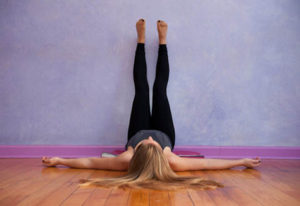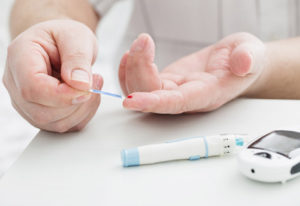Many of us may have been told to lie with our feet up the wall. Strange? Yes. Comfortable? Sometimes. But beneficial? Most definitely!
Lying with feet up the wall (or Viparita Karani as the yogis would call it) has lots of benefits to our health which many of us are unaware of. Now before those of you who say they ‘aren’t flexible’ or ‘not good at yoga’ zone out, this is one of the easiest yoga poses you can do. It requires minimal flexibility, doesn’t force you to strain your muscles and is said to help you relax both mentally and physically.
THE BENEFITS:
Reduces oedema in the legs
This is particularly beneficial if you have had a recent injury to your lower limb or are on your feet constantly, and have swelling which just doesn’t seem to go away. Lying with feet up the wall uses gravity to help shift the fluid out of your legs and towards your body where it can be efficiently removed.
Soothes sore muscles
Lying with your legs elevated can help to rebalance the circulation in your muscles and encourage drainage of lactic acid, particularly following an intense workout. It can also be useful after a long flight, especially if you are someone who tends to feel achy for some time after landing.
Stretches the hamstrings
The closer you get your back to the wall the greater stretch into your hamstring you will get, particularly if you are able to keep your knees straight when up the wall.
Relieves lower back tension
Easing tension in the lower back doesn’t just come from lying with feet up the wall, but lying on your back, in general, can relax the lower back which is commonly overworked. Having your feet up the wall encourages this relaxation further due to being in a different position to normal and forcing your legs and hamstring to relax also.
Calming for the nervous system
If you haven’t picked up by now, lying with your legs up the wall helps to completely relax the body, and not just on a superficial level but all the way down to our nervous system. When we are relaxed, our body is able to digest food we have eaten and work on healing our worn-down bodies, making us feel calmer and generally more at ease with ourselves both mentally and physically.
HOW TO:
Set yourself up so your bottom in right against the wall (or as close as you are able to!), lying on your back with your legs out to the side. Once you are comfortable here bring your legs up and around so they are relaxed against the wall. If you have a belt of a band that you can use, set it to roughly hip width and place around your feet to allow your legs to completely relax.
The benefits of this exercise can be seen within 2 minutes of holding this position but most people recommend holding this pose for up to 15mins to really get the full benefits that it has to offer.
So have a try tonight, spend a few minutes relaxing and restoring your body and feel the benefits for yourself!
BY BRIDGET STEWART














